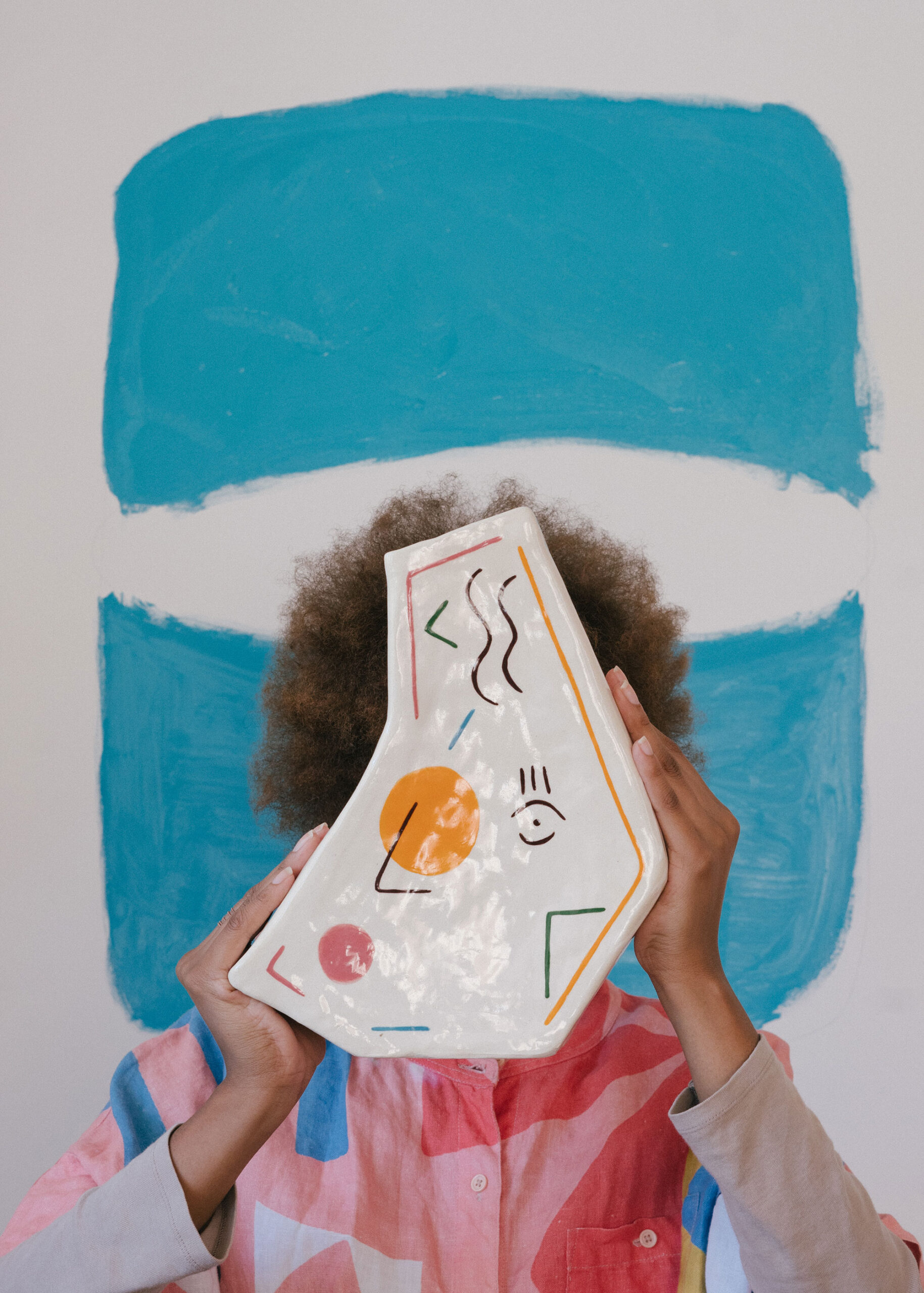
by admin | Mar 29, 2021 | News
Article by ARTeria
Women as leaders are known for their empathy, consistency and encouraging staff to collaboration. Additionally, women who happen to be artists are full of creativity, high self-esteem as well as open-minds.
Art enables us to share thoughts, visions and ideas that may not be able articulate in any other way. The skills gained through practising art can be used in creating businesses of your own.
As a good example, we could give a figure of a great female entrepreneur, Sylwia Dąbrowska.
Dąbrowska is a theatre instructor, drama teacher and graduates from The Academy for Theatre Practices in Gardzienice. Under the nickname „Teacherka (http://teacherka.pl/o-mnie/)”, she prospers as an adviser for people who are bound to start their journeys as stage performers or in front of cameras.
Due to her over 12 year of experience with theatre, she’s able to help those, who suffers from stage fright or just lack in the knowledge of a „proper presence” on stage or via video live. Except for offering online courses in the field of camera presence and fighting stage fright, she creates mentoring plans for growing businesses.
Sylwia Dąbrowska is an illustrative example of a female artist, who was able to billow her artistic experience into a developing business.
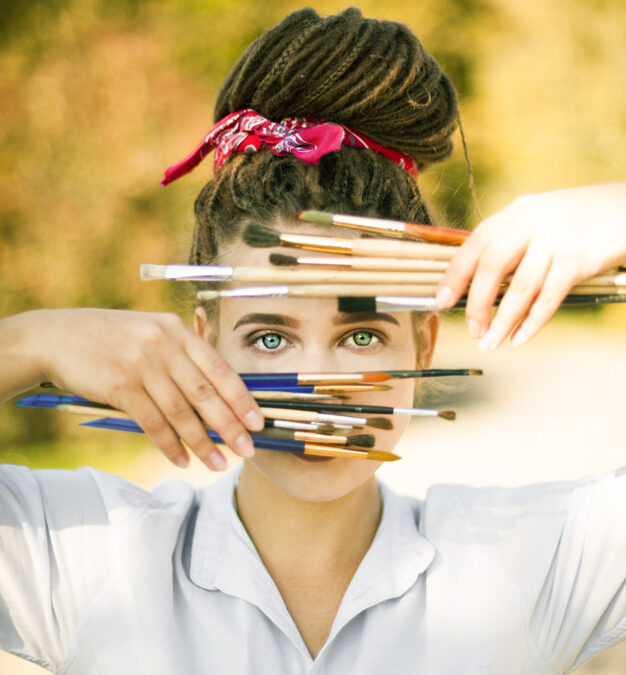
by admin | Feb 3, 2021 | News
Article by Zuzanna Stachura – ARTeria
Social roles have been around for centuries, despite the tremendous progress our society has made in recent decades, they still have a huge impact in today’s job market. In particular, it is women who face constraints in their ability to advance in their careers, the so-called „glass ceiling phenomenon”.
The phenomenon that, due to systematic barriers, low representation and mobility, and ever-present stereotyping, prevents women from advancing to higher positions. This fact affects almost all women in the market sectors, especially female artists and those working in the creative sector. According to the report „A poor chance of promotion?” Published by the Katarzyna Kozyra Foundation, there are far fewer women than men employed at Polish art academies. This is surprising because women are the overwhelming majority of students in the above-named universities. This barrier is due to long-standing historical beliefs; the childcare and eldercare duties they perform. Employers persist in the belief that hiring women (especially in higher positions) risk their decision to become mothers, and thus to abandon work for the family. Also, this reason affects their situation in the artistic community. Buyers, when deciding to purchase a piece of art, pay attention to „who they are buying”. These transactions are often treated as further investments rather than acts of admiration for the art and its author. Therefore, they ask themselves, how long will this painting/ work be significant? Worth it? The „danger” of buying works from female artists is again – motherhood.
The purchasers are afraid of the loss of timeless on their art, in case the artist decides to give up their job for a while and devote herself to motherhood, and thus lose her position in the art arena. This can be illustrated by the earnings of Polish female artists, whose works bring an average of 47.6% less than the profits generated at auctions by men. The reasons for this disparity are varied and not fully specified, however many would argue that the main reason is not fully specified, however many would argue that the main reason is not rational in any way. Discrimination against women does not stem from formal reasons, but from human mentality, stereotypes and prejudices created by society. Unfortunately, in many cases „women’s art is cheaper because it’s made by women”.
In recent years, the situation is fortunately changing. Many Polish museums and galleries choose to present female art. The question, however, lies in the essence of this change – is it just another „feminist and women liberating” trend, or is it a real change that has a chance to change the face of Polish art? Agnieszka Mese, an art consultant, currently helping women artists take their first steps in the industry, responds (from an interview by Anna Macioł-Holthausen, „Women’s Art Still Underestimated?”): „For now it’s just a trend, we’ll see if it continues”. She assures us that this is a step in the right direction, we just need to keep an eye on the situation and do everything we can to make sure that women finally start being treated equally to their male artist colleagues. Despite many changes, female artists are still rarely exhibited, entire exhibitions are rarely dedicated to them, and awards and competitions still go more often to men.
The popular belief that says: “the real artists ought to be poor” to appreciate the real virtues in life does not help the situation of female artists either. They are expected to exhibit their work for free or take part in unpaid internships for the belief that an artist’s work is not a job but above all – mission. Therefore, specialists support institutions and measures are needed to protect artists and women employed in the cultural sector from unfair treatment by their employers and contractors. Also, as a society, we should fight gender inequality at all career levels in every sector of today’s economy. If we get rid of all the stereotypes created for the so-called „gender roles” the situation of women artists in Poland and Europe will change significantly.

by admin | Jan 25, 2021 | News
By Millie Wright
We are at a crux in history where conventions are being challenged and expanded. After years of racial and gendered struggle, black women are beginning to gain appreciation for their artistic talent and discriminatory struggles they have overcome to achieve these, that history had attempted to conceal.
Of these women was Augusta Savage (1892-1962), painted as ‘one of America’s most influential 20th-century artists’, whose work consisted of a diversity
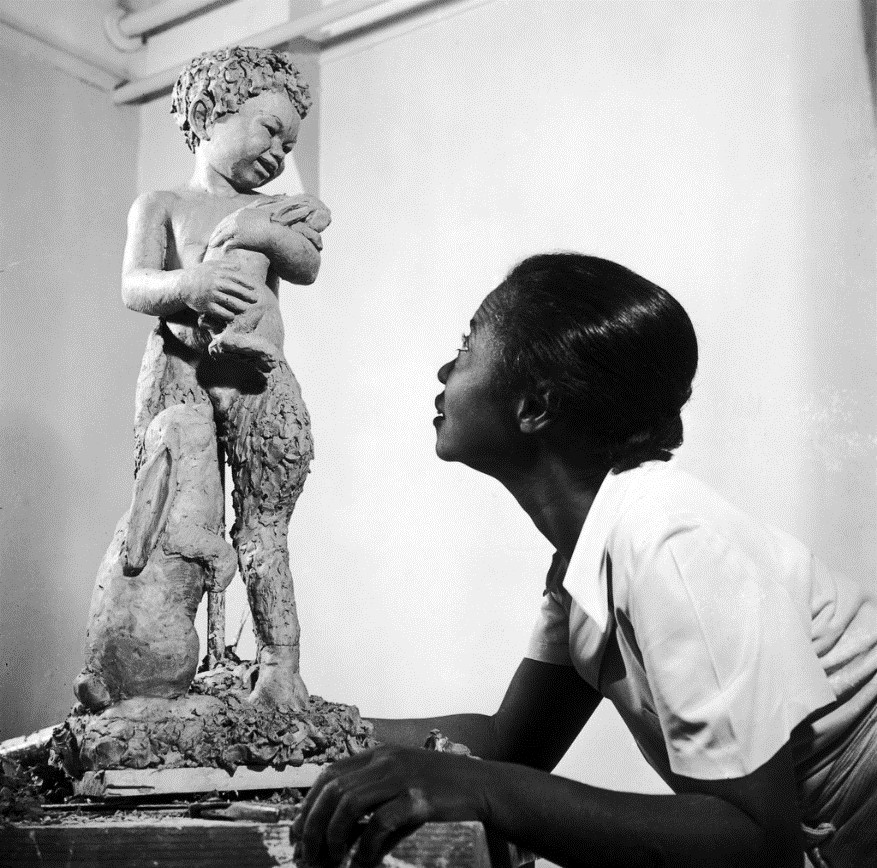
Augusta Savage working on a piece, New York, NY, 1938. Source: Hansel Mieth/The LIFE Picture Collection/Getty Images
of striking sculptures. She is celebrated not only for her exceptional artistic contributions but also her lifelong advocacy for African- American’s equality within the Arts.
Savage was at the heart of the 20th century Harlem Renaissance, remembered as the ‘golden age’ of black art, music and literature.
The movement began due to the formation of a creativity hub of African American artists in liberal Harlem, New York, after their ‘Great Migration’ from repressive southern states.
Through her art and activism, Savage became an influential teacher to younger African-Americans and played a great role in shaping the careers of many of the Renaissance’s most prominent artists. Her creation of the multi-cultural establishment, ‘Savage Studio of Arts and Crafts’ in 1931 later renamed as the ‘Harlem Community Art Center’, in 1932, was fundamental to the Harlem Renaissance’s artistic advancements and would foster the development of 1,500 students.
For the remainder of her life, she continued to create groundbreaking work, such as her sculpture of a child from Harlem, Gamin, (1929) but what reinforced her greatest legacy and true masterpiece was the impression she left on her students.
A key impact, and one of many that the movement brought, was that Black artists have gained increased control over representations of Black culture and experience, which helped to later set the stage for the Civil Rights Movement.
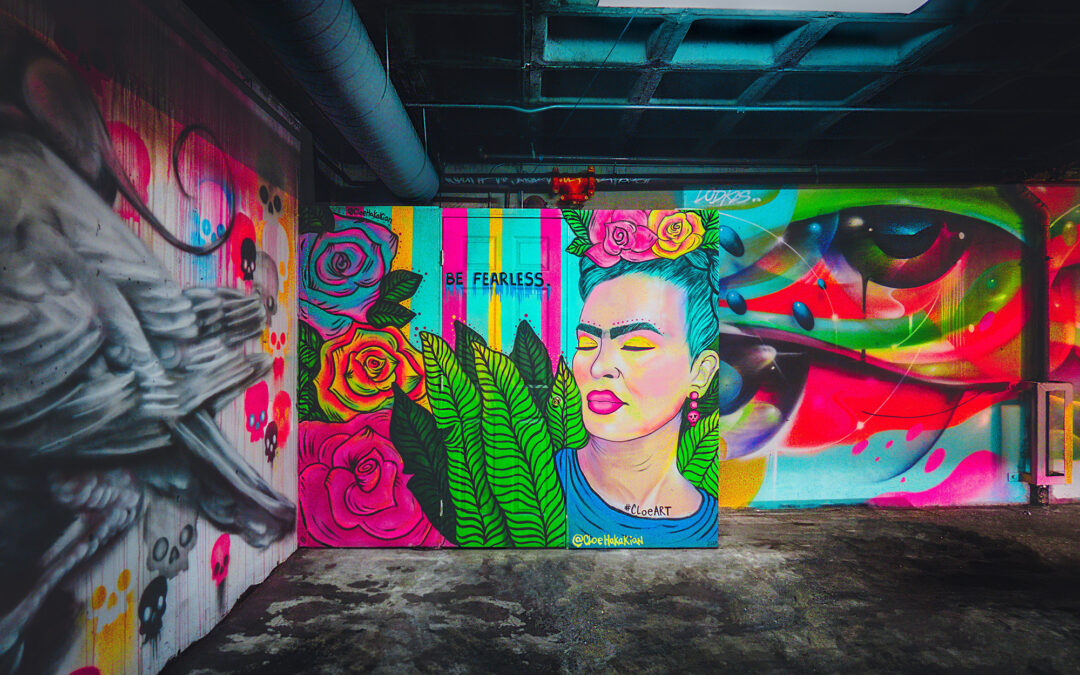
by admin | Oct 30, 2020 | News
Photo by Joshua Coleman
Great female artists have hardly been known in society because women in art have not been sufficiently researched, appreciated, or recognized by society despite their talent.
There are certain exceptions that women have been valued for their talent and their name has endured through history, such as Frida Kahlo.
Frida was a Mexican painter who was highly recognized for her art and expressionism, where she mirrored the dramatic events of her life that she remembered with great sensitivity. One of these events was an accident at the age of 18 that kept her at rest for a long time, the period during which she started to paint and express her thoughts and feeling through art.
Even though society has not previously valued the talent of other women unless they belonged to influential social classes, as is the case with Natalia Goncharova or Berthe Morisot, Frida Kahlo was recognized without belonging to an influential class, but for being a woman with revolutionary political ideas for the time. She was a popular activist and even participated in politics in the Communist Party, a great defender of feminism and the indigenous population.
Although her works were groundbreaking in expressing an image of a liberated, strong, and revolutionary woman, it can also appreciate a clear theme of sadness and pain.
A relevant fact was that in her first exhibition, she was ill, and the doctors advised her not to attend, but despite this, she installed a bed in the middle of the exhibition, where she rested, sang, and encouraged the exhibition.
Frida has been mentioned in musical works, paintings, and films such as the Red Hot Chili Peppers’ Scar Tissue, a song dedicated to Frida. Moreover, there is a museum dedicated to her, that is called Casa Azul Museo Frida Kahlo, exclusively with her paints.
In conclusion, Frida Kahlo has been one of the few women that society that has been recognized for her talent thanks to 47 years of life full of struggle and defense of ideas without fear of consequences or repression.
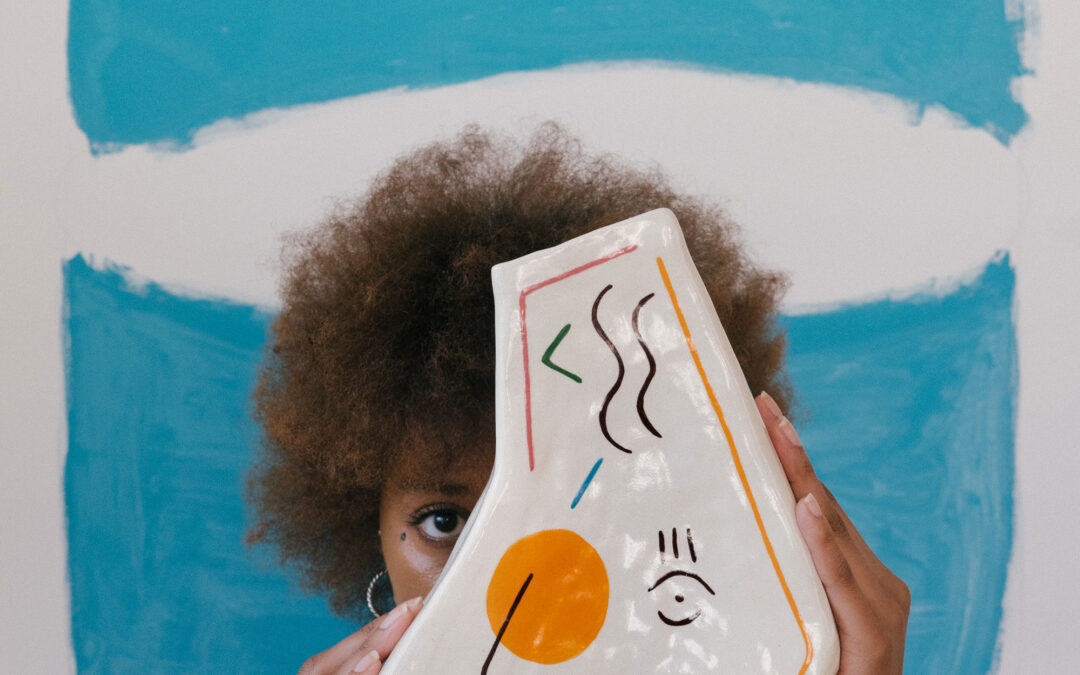
by admin | Jul 22, 2020 | News
Through the question ‘’
Why Have There Been No Great Women Artists?’’ is possible to start to realize and extent the consciousness of how the ideas, beliefs and things have been conditions and often falsified influencing the paper of women in the society.
It is important to consider that there were not knowns great women artists but because women in art have not been sufficiently investigated and appreciated. Furthermore, examining the society in general and women’s position, it was institutionally impossible for a woman to achieve success or be recognized, no matter what her potential, talent or genius was. The women have not achieved the same status as men in the society because in art as in many other fields or areas, the women have been oppressed, discouraged and stultified, and did not have the ‘’good fortune’’ to be born white, preferable middle class and above all, male. The issue or problem is not in humans’ hormones, menstrual cycles, etc. but the education and institutions.
Moreover, the misconception of what art is, the idea that art is direct, personal expressions of individual emotional experience and translation of personal life into visual terms; which influence the perception of women in art and makes them receive comments such as ‘’considered unsuitable for the female spirit’’ like in the case of the art of Artemisia Gentileschi.
However, it is important to consider philosophers like John Stuart Mill whom argued that the progress of the society requires that no people, men and women be imprisoned in the “fixed social position”. Mill claimed that liberation of women will produce two important results: benefit society by triggering the contributions of women and it will benefit women by granting them the autonomy. Women face the reality and fight for changing the present situation.
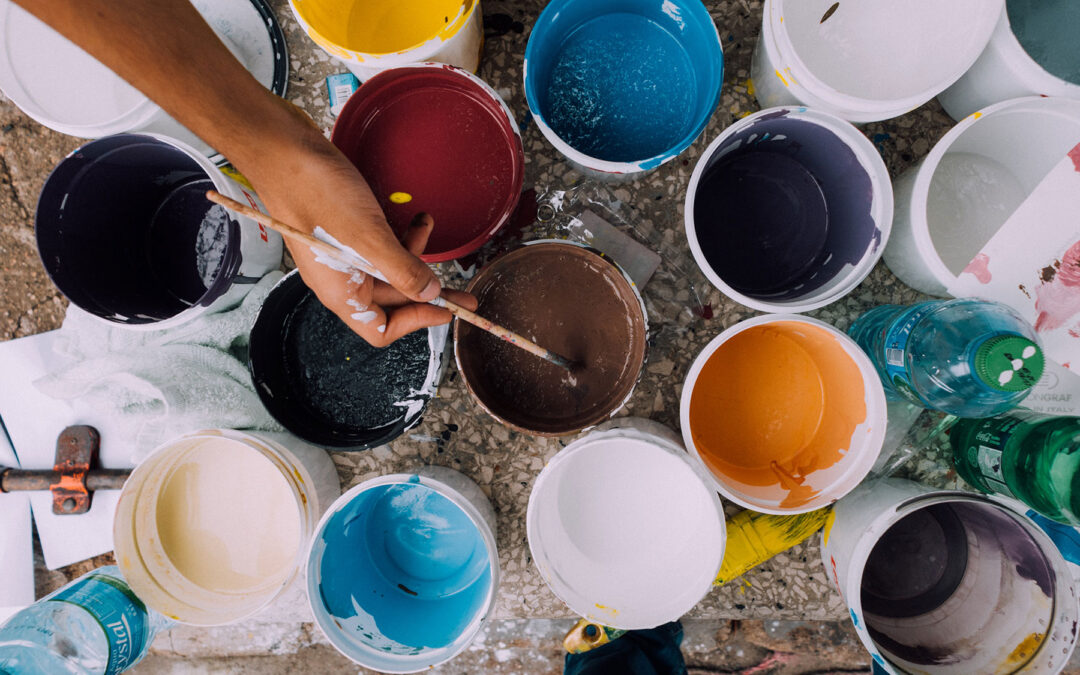
by admin | Jun 19, 2020 | News
Despite the worldwide pandemic, The Global FemART partnership continues to work hard to keep the Global FemART project going! Our project partners in the UK, Spain, Italy, Poland and Belgium are working extremely hard to keep conducting training sessions and developing the Global FemART Academy.
Changes due to Covid-19
Whilst the Global FemART project continues to help female artists and creatives, there have been a few changes to the way the project is running. Given that social distancing is in place and all the partners are working from home, the partnership has had to make a few alterations to our original plan! Don’t worry though, you can still benefit from the training and academy, just not in a face-to-face way for a while!
Artist CirclesTM delivery: In many of the partner countries, trainers have started to deliver the second round of Artist Circle sessions online, rather than face-to-face. Given the current situation, group meetings are not possible; however, with all the amazing technology available to us, we are able to conduct these sessions online, via platforms such as Zoom or GoToMeeting. Inova Consultancy, developers of the Circles methodology, have had previous experience of conducting Circles sessions online, with each session being just as successful, beneficial and rewarding as those conducting in a face-to-face setting.
The Italian partner, Materahub, has already finished their online training sessions and have praised the success of the training and its value for participants: check out the Materahub article for more details!
Transnational Partner Meetings: Given the current situation, the partnership has not been able to travel to have face-to-face partner meetings to discuss all aspects of the Global FemART project and the next steps to take! However, through the use of online platforms, the partners have been able to stay connected and ensure the project is managed effectively in each of the countries involved, and will continue to do so until it is safe to once again travel.






